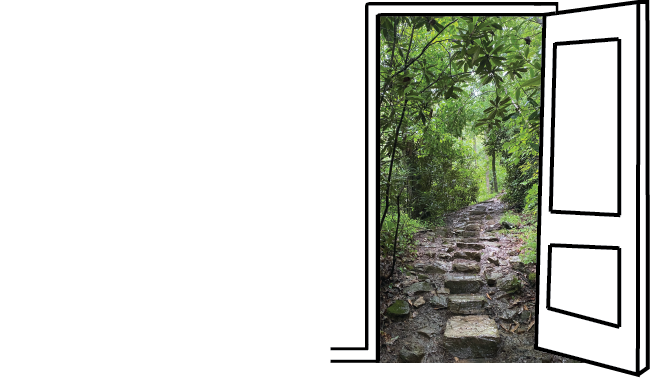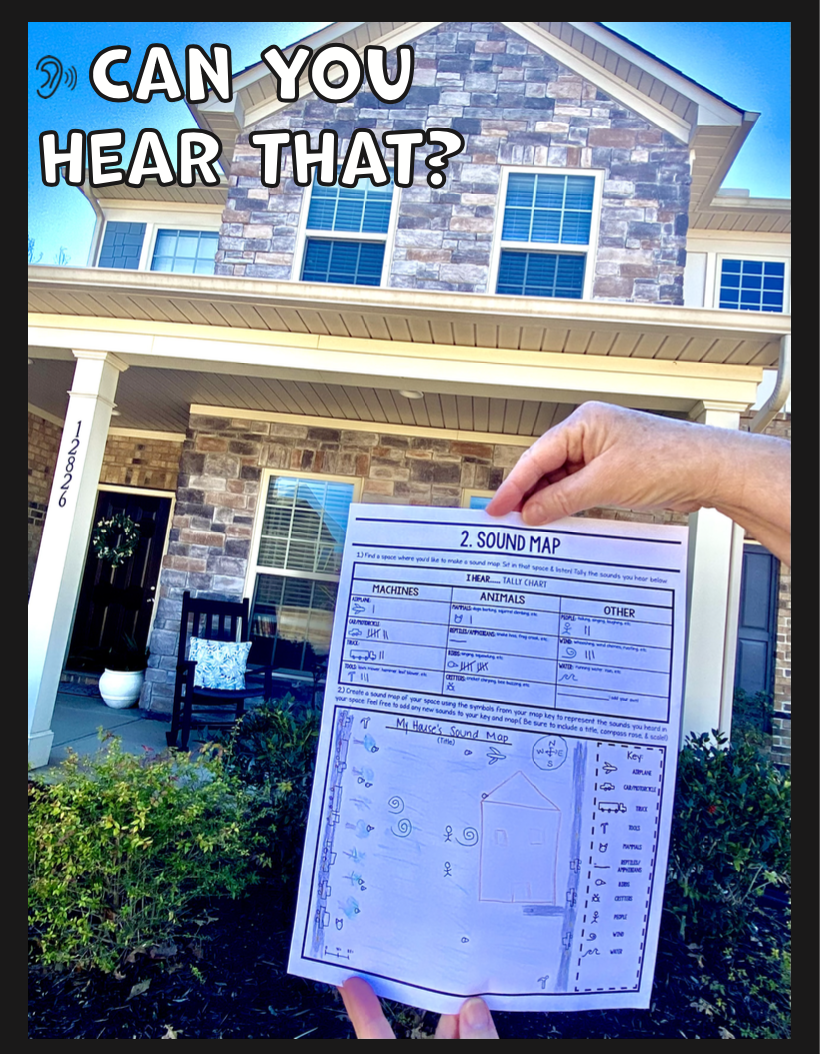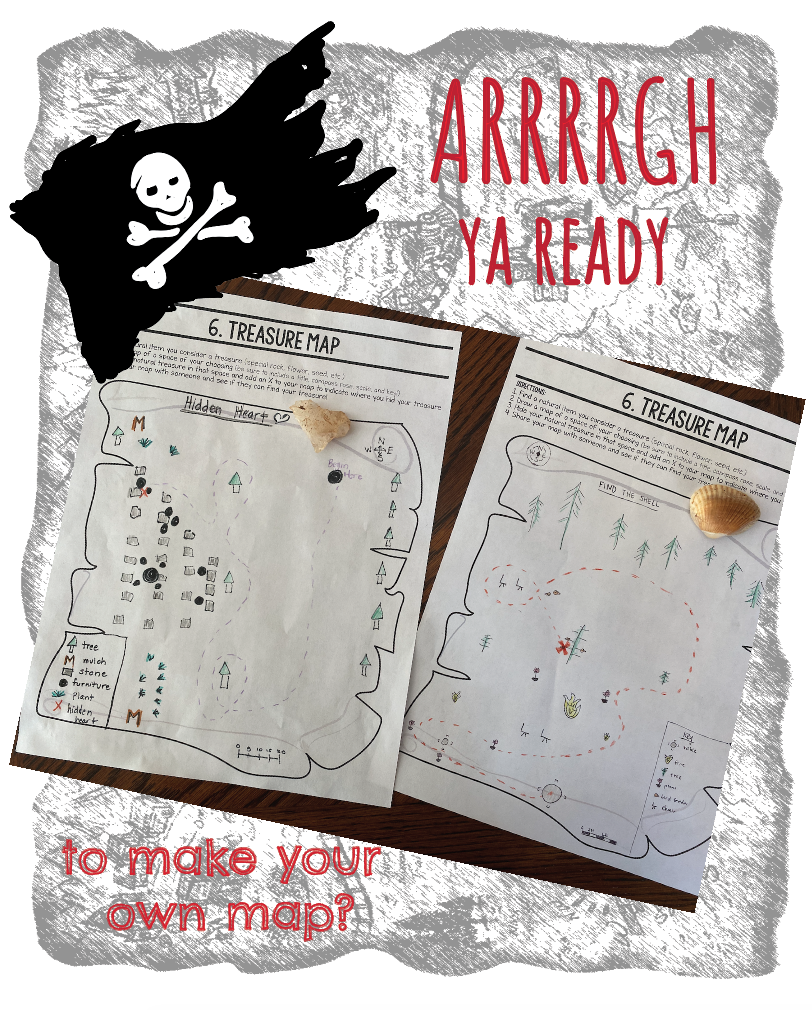Maps as learning Tools
There are many different kinds of maps for children to explore,
deepen their learning and find their place in space!
Before we get into all the AWESOME different kinds of maps children can make-
Why are maps important- what can maps actually teach children?
Science: space, ecosystem, weather, global changes
Social Studies: geography, map skills, historical events, populations, resources and economy, explorers
Math: measuring, computation, comparing, interpreting & analyzing data
Literacy: reading, writing, vocabulary
& even problem solving, directionality, spatial skills, creativity, fine-motor skills, and so much more!
Interactive Maps to Make with Learners:
All the learning pages from the photos below are available in our SHOP as a quick download bundle!
Sound Map
Sound maps are a wonderful way for children to practice mapping using their senses. They provide a multi-sensory experience for children and help them develop cognitively as they hear the sounds with their ears and then create a visual image using their eyes and hands.
How do you map sounds?
Sit in a space you would like to map and close your eyes. Listen for different sounds in the space. Use paper to add the different sounds you hear as symbols to your map key (look at the photo for examples). Be sure to include all of the map parts- title, compass rose, scale, & key.
Feel free to map the same space at different times of the day to track how sounds change in that space throughout the day. This is particularly fun when you can hear different animals that are active in morning, afternoon, or night!
Star Map
Star maps are a way for children to practice mapping while learning about space! Children will get scientific as they learn about the stars in the galaxy and constellations.
How do you map stars?
Have children bring out a paper, writing tools, and a flashlight if needed. Have children focus on just one cluster of a stars (aka a constellation) to draw.
Depending on the learner’s age- have them count the stars in the constellation, see the picture within the constellation, find other celestial objects in relation to their constellation, and research more about the constellation. Be sure children add a title, compass rose, and key. (Older kids may even be able to add a scale using lightyears!)
Optional for a class- have children all choose different constellations and then create a giant class star map and have each child share about their own constellation.
Topographical Map
Topographical maps are a way for children to depict the physical features of the land. Children learn about natural landforms like mountains and rivers and how the land changes in elevation by building and engineering with their hands!
How do you map a land’s topography?
Embrace the 3D aspect of topography- this can be done using clay and other similar objects OR this can be done using natural materials in the dirt.
Canvas a trail or outdoor space you would like to recreate in map form. Then make your topographic map right in the dirt/mud. Use 4 sticks as a frame or outline to your map. Shape dirt or mud on your map to show the elevation changes within your space. Use natural items to represent different landforms significant to your space (look at the photo for examples). Be sure to make a key on a separate piece of paper or by writing in the dirt what each natural item represents. Do the same for a title, compass rose, and scale!
Feel free to take a picture of your topographic map to keep as a record of learning and/or in case of any natural destruction.
Heat Map
Heat maps are a fun way for children to experiment with temperature. Children will experiment, collect data, and learn about microclimates while making their heat maps!
How do you map heat?
Choose an outdoor space you would like to use to create your heat map. You will be collecting data to find the hot and cold spots in that space. Design a simple experiment to collect your data (ex. place ice cubes and/or chocolate in cups in various spaces and then see where the ice/chocolate melts fastest). Once you have your data, map the cold and warm spaces by adding color to your map. Include this in your key (ie. cold spots colored blue and hot spots colored red). Be sure to add a compass rose scale, and title to your map too!
This could be very helpful when learning about animals, ecosystems, and climates. Children can learn about animal adaptations- which prefer warm or cool spots, microclimates-why certain places are warmer or colder,.
Treasure Map
Treasure maps are a way for children to have fun while learning how to make and use maps. Children will be challenged to make an accurate map so others can follow it to a treasure!
How do you make a treasure map?
Let your child choose a treasure (we recommend a natural treasure like a special rock, flower, etc.) Then let the child hide their treasure in a safe space. Have the child draw a map as accurate as possible (be sure to include a title, compass rose, scale, and key!) and add an X to indicate where they hid the treasure. Lastly have the child share their map and see if their partner can find the treasure!
This experience encourages the child to focus on drawing a map that is accurate, clear, and detailed.
To expand this activity, teach your child about real life pirates. There are many interesting tales that children will love!
An easy download to help kids make each of these interactive maps….
A Cartographer’s Adventure
A Cartographer’s Adventure is a cross-curricular exploration of different types of maps that includes all of the pages featured above.
Children will use math, science, social studies, literacy, problem solving, and art skills to delve deeper into map-making.
Children will enjoy learning about map-making by exploring sound maps, heat maps, star maps, topographical maps, and treasure maps.
Learn more and download from our SHOP.







